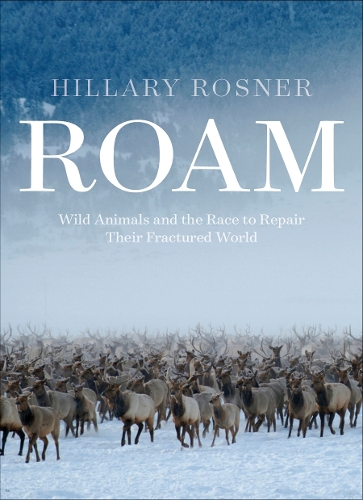
Roam: Wild Animals, Human Landscapes, and the Race to Knit the Natural World Back Together
(Hardback)
Publishing Details
Roam: Wild Animals, Human Landscapes, and the Race to Knit the Natural World Back Together
By (Author) Hillary Rosner
Patagonia Books
Patagonia Books
21st January 2026
United States
Classifications
General
Non Fiction
Conservation of the environment
Narrative theme: environmental issues / the natural world
Physical Properties
Hardback
Description
What if the key to saving our home planet is tolet animals and other species roam free What could we learn about adapting to climate change if we let them exist as they would in a world without humans
These are the questions that Hillary Rosner attempts to answer in Roam, an urgent quest to figure out how to stitch our fragmented planet back together. It's about the people trying to reconstruct landscapes where animals can once again move freely, as they did for millennia. It's about reconnecting Earth so that wild species and natural systems have room to adapt and thrive. It's about seeing wildlife as the guides we need to lead us to adapt to climate change.
Humans have always altered the landscapes around us; in some ways it's part of what defines us as a species. But since the middle of the last century, we've changed the Earth on an overwhelming scale. Our infrastructure, our hunger for resources, our methods of farming and traveling and living-all these have rendered our planet inhospitable for the other species that live here. As a result, all over the globe, animals are stranded-by roads, fences, drainage systems, industrial farms, cities. They simply cannot move around to access their daily needs. Yet as climate change reshapes the planet in its own ways, many creatures will, increasingly, have to move in order to survive.
This book illustrates a massive and underreported problem: how a completely human-centered view of the world has impacted the ability of other species to move around. But it's also about solutions, and hope: How we can forge new links between landscapes that have become isolated pieces. How we can stitch ecosystems back together, so that the processes still work, and the systems can evolve as they need to. How we can build a world in which humans recognize their interconnectedness with the rest of the planet, and view other species with empathy and compassion.
Author Bio
Hillary Rosner is a science journalist and editor. She has reported on the environment from across the U.S. and around the world for publications including National Geographic, The New York Times, The Atlantic, Wired, Mens Journal, Scientific American, bioGraphic, Undark, Nautilus, Mother Jones, Popular Science, High Country News, The Boston Globe, The Denver Post, OnEarth, Audubon, Smithsonian, Slate, and Grist. Her work has won two AAAS-Kavli Awards and others from the Society of Environmental Journalists and the National Association of Science Writers. She's been a Ted Scripps Fellow, a Knight Science Journalism Fellow at MIT, and an Alicia Patterson Fellow. She's a frequent speaker at workshops and seminars on science communication and loves teaching scientists how to write about their own work. She lives in Boulder, Colorado.
